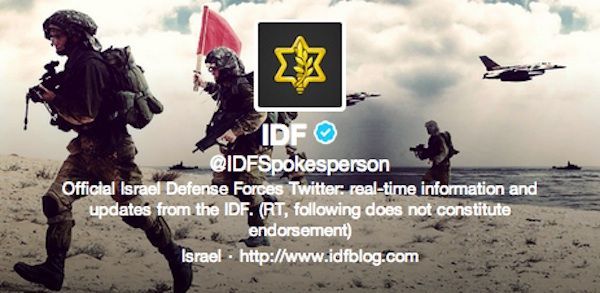Social Media Accomplishments in 2012 Transform the World

Over the course of the year, social media experienced its fair share of "firsts." Marked by major events like the Summer Olympics, the presidential election, Hurricane Sandy, and turmoil abroad, 2012 saw innovations in social media that far exceeded our expectations. And with the year coming to an end, the Internet is flooded with speculation about what will come next.
In preparation for a new year, it is important to take a look back and highlight the accomplishments in the realm of social media to better understand its role in 2013. What social media accomplishments in 2012 transformed our understanding of current events worldwide?
Increased Citizen Participation in the Political Process
Twitter most notably transformed the 2012 election, providing a platform for journalists, politicians, and voters to engage with the political process in innovative and revolutionary ways - in 140-characters or less. Up 42% since March, Twitter now boasts 200 million monthly active users, generating over 400 million tweets per day.
By live-tweeting the presidential debates, following the political commentary in real-time, and connecting with state and local politicians, users became engrossed in the 2012 election on Twitter. With over 20 million tweets, the 2012 election was the most tweeted about event in political history, producing the most retweeted tweet in history, now with over 817,000 retweets.
https://twitter.com/BarackObama/status/266031293945503744
Not only did the advent of live-tweeting political events result in the highest engagement in the history of Twitter, but the phenomena of social sharing on Facebook materialized in a quantifiable increase in voter participation. Passing the 1 billion user milestone in October of 2012, Facebook was instrumental in getting out the vote, providing users the option of sharing their intent to vote via the "I'm Voting" app.
Substantiated by a UC San Diego led study, social influence "may be the best way to increase voter turnout." The 61 million person experiment resulted in an additional 340,000 votes in 2010, reaffirming the power of Facebook to mobilize. On the curtails of the UC San Diego finding, the 2012 election encouraged 9 million users to declare their intent of voting.
A Social Media War
When the Gaza Strip conflict intensified at the end of 2012, the Israeli military and the Hamas military wing took to Twitter to live-tweet the conflict, in full, and at times graphic, detail. This was the first time in history a war of this scale was live-tweeted by the parties involved.
Given the difficulty of gaining access to this region, the attempts at live-tweeting the conflict in real-time could be informative in nature, but as reported previously on IVN, the activity on Twitter could be another tool in the political battlefield. While information sheds light into the happenings abroad, the dueling Twitter accounts "compete to dominate the narrative surrounding the war in a struggle to accurately depict a nuanced, complicated, and often emotional, conflict."
Whether or not this type of activity will be emulated in 2013 remains to be seen, but the historic importance warrants discussion as to the role of Twitter and social media in international reporting and conflict resolution.
Ensuring Internet Freedom Through Social Media
In January of this year, the Internet experienced a "blackout" as some of the most popular websites shut down to protest SOPA and PIPA, legislation threatening the freedom of the Internet. While the legislation made its way through the House of Representatives, protestors made their way through social media websites, urging lawmakers to reject the legislation.
On January 18, the day of the blackout, Twitter generated almost 1 million tweets using the hashtag #sopa, around 300,000 using the hashtag #pipa, another 300,000 using the hashtag #wikipediablackout, and almost 100,000 including the hashtag #sopastrike. One day later, the number of Senators opposed to SOPA jumped from 6 to 22, while the number of Representatives opposing SOPA dramatically increased by 70 members, reaching 95 opponents.
The takeaway: Calls for action on social networks had real-world implications in the US political arena in 2012.
Civil Unrest Goes Viral
Fueled by civil unrest and social media mobilization, the Arab Spring was a defining movement in 2010. The advancement of technology and increased availability of social media tools, however, have shaped the continuance of the Arab Spring and citizen protests, facilitating a new type of journalism in 2012. Social networks like YouTube and Instagram have paved the way for the mass spread of unfiltered information in multi-media form.
Syrians, for example, discovered the political power of Instagram, using the photo-sharing app to spread images of their revolution with the rest of the world. Buzzfeed aggregated some of the top photos on Instagram depicting the Syrian revolution here. In these photos, Syrians used the platform to empower and ignite unrest worldwide.
Speaking to the importance of citizen journalism, Clay Shirky of NYU Journalism wrote:
"There are three advantages to citizen video over what is produced by trained press. The first is that the first people on the scene of an event are usually citizens, so it is better for speed. The second is that there are more citizens than press, so it is better for coverage. The third is that it is harder to control citizens than press, so it is better for free speech."
What was once limited to Twitter has now spread to the multi-media medium, allowing for protestors across the world to elevate their struggles and victories as the world watches.





